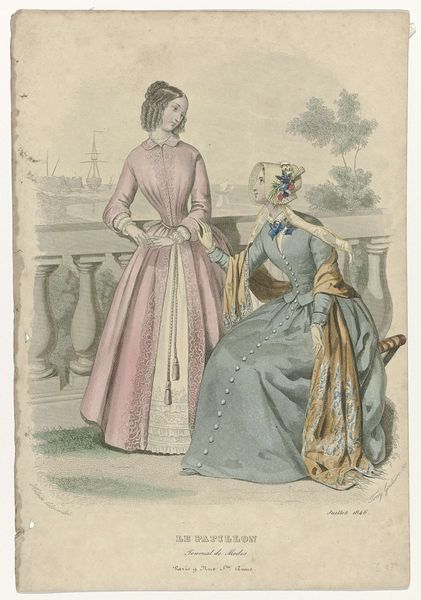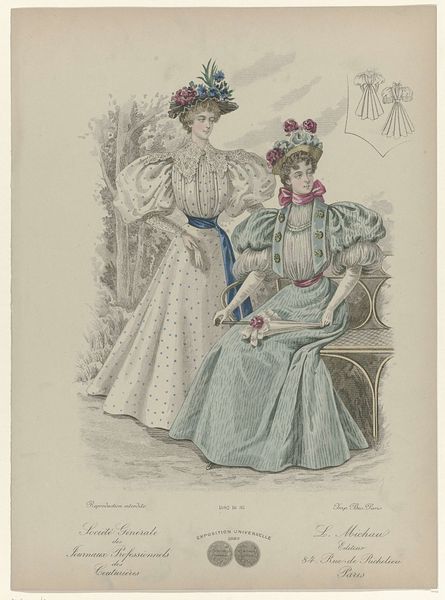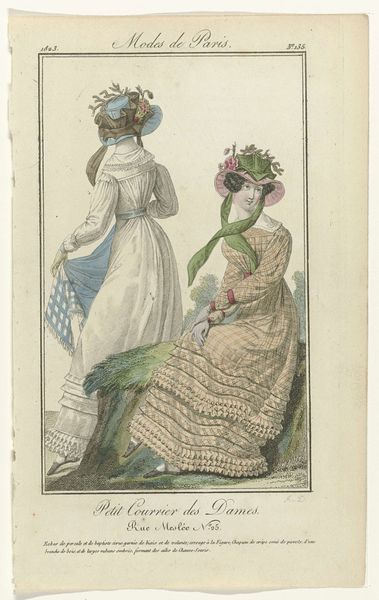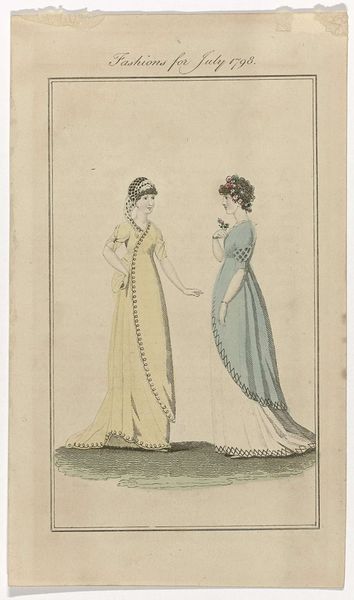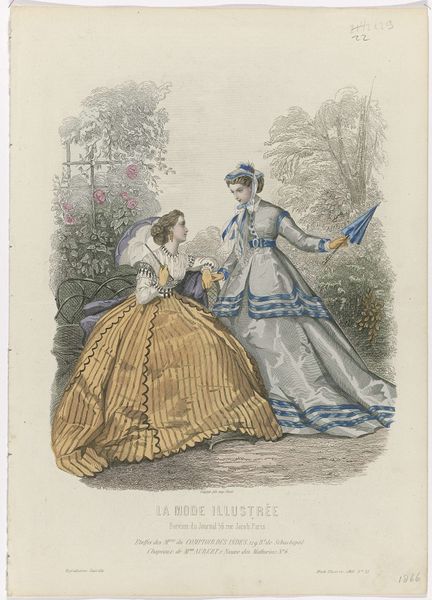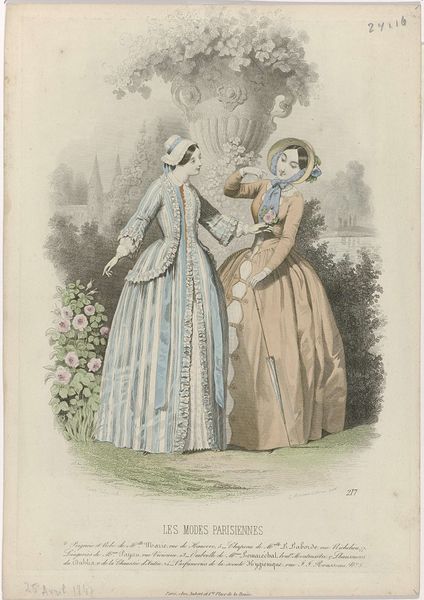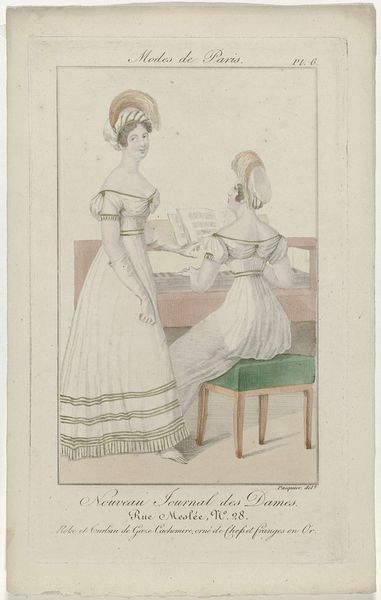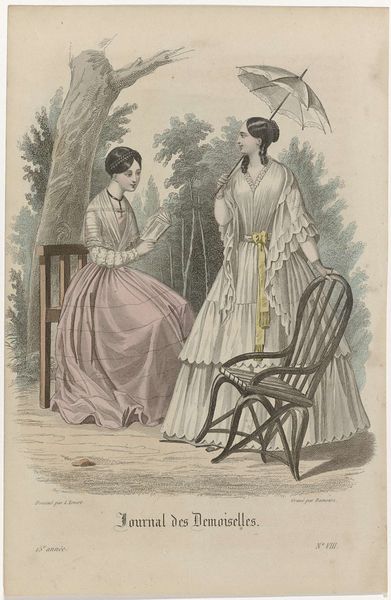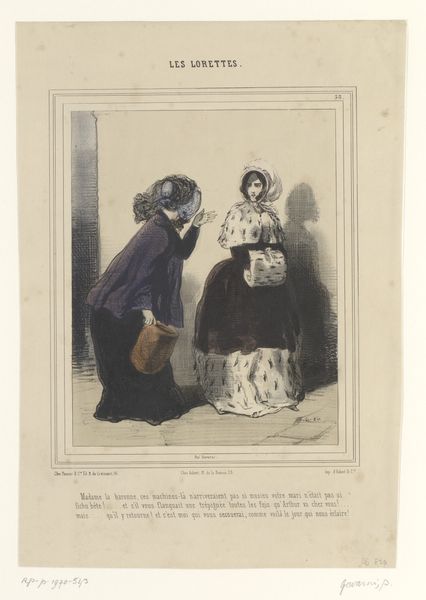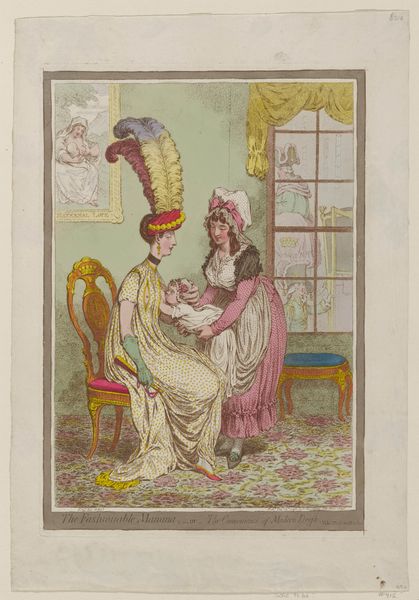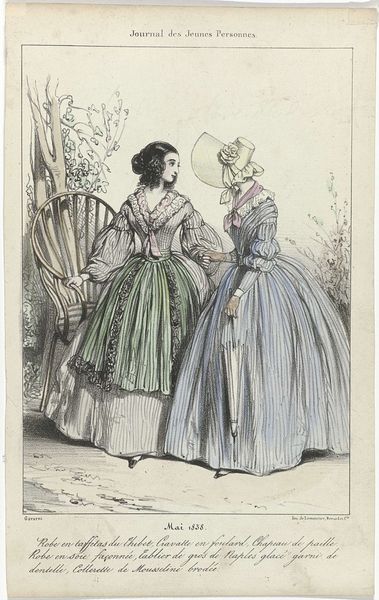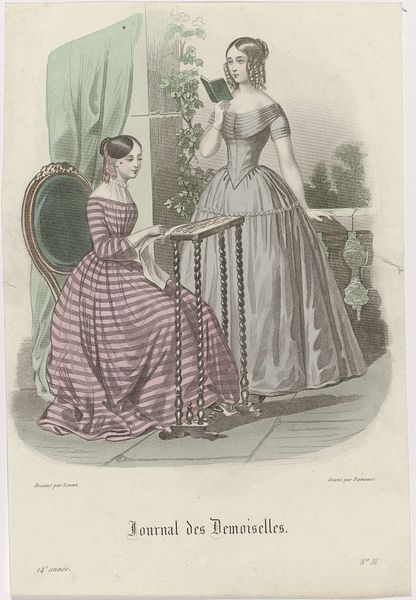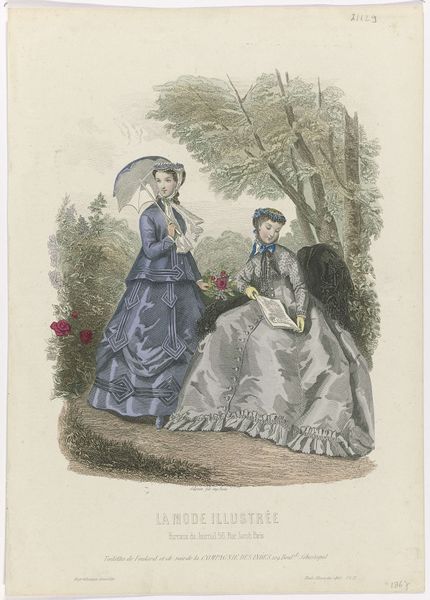
drawing, coloured-pencil, paper, watercolor
#
drawing
#
coloured-pencil
#
paper
#
watercolor
#
coloured pencil
#
romanticism
#
watercolour illustration
#
genre-painting
#
watercolor
Dimensions: height 298 mm, width 237 mm
Copyright: Rijks Museum: Open Domain
Curator: This watercolor, colored-pencil, and ink drawing is titled "Gallery of Fashion." Its creator is anonymous, but it likely dates from around 1801 to 1805. It’s a fascinating artifact, currently held at the Rijksmuseum. Editor: Isn't it just breathtaking? The delicate colors give it such a dreamlike quality. They appear poised, and ever so slightly sad, or perhaps contemplative, lost in thought as they pause for us to catch up? Curator: Well, these sorts of fashion plates were immensely popular. Beyond aesthetics, they served a crucial role. As commercially produced images, they not only dictated taste, but circulated new visual ideals related to status and femininity within very specific economic realities. Editor: I like your analysis; yet beyond this 'marketplace of imagery' as it were, I also sense something a bit… wistful. The soft rendering almost veils the sitters, inviting us to see beyond mere elegance. There is perhaps an unspoken narrative about their own relationship to fashion. The very architecture and natural elements are almost characters within this romantic watercolour illustration. Curator: That tension you're feeling—between lived experience and idealization—was inherent to the era itself. This period reflects the intersection of rigid social codes with emergent individualism. The rise of Romanticism also significantly impacted aesthetic sensibilities of the day, placing heightened importance on subjective feeling. Editor: Fashion is rarely 'just' fashion isn't it. As you put it, it embodies a societal tension. Are they participating, resisting or complicit? I look again. Both women wear their blue gloves, an attempt, as it were, to fit and perhaps 'fly'. This attempt to meet these codes may have simultaneously constricted. This is really profound if we see this as almost performative! I see art that encapsulates entire centuries. Curator: Absolutely, viewing it as performance offers new understanding. I am keen for listeners to explore this image for themselves. As we begin to conclude, I suggest we must each consider how images like this shape our perceptions today and the weight images carry to us, even now. Editor: I wholeheartedly agree. "Gallery of Fashion" indeed, a silent mirror reflecting us, yesterday and today. What better provocation than the gaze of a silent artwork?
Comments
No comments
Be the first to comment and join the conversation on the ultimate creative platform.
